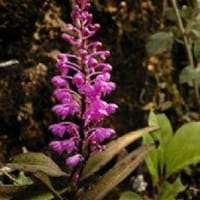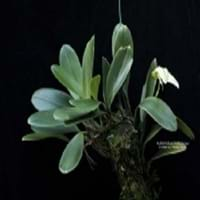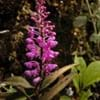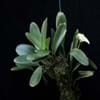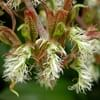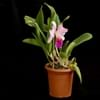Life Span
Annual
Perennial
Origin
Southeastern Asia
Southeastern Asia
Types
Aerides Falcata
Aerides lawrenciae
Aerides multiflorum
Aerides rosea
Bulbophyllum grandiflorum
Number of Varieties
Not Available
Habitat
gardens, Grassland
Humid climates, Well Drained
USDA Hardiness Zone
13-15
11-15
AHS Heat Zone
12-10
12-10
Habit
Clump-Forming
Clump-Forming
Flower Color
Light Yellow, Gold, Fuchsia, Ivory
White, Gold, Light Green, Tan
Flower Color Modifier
Multi-Color
Bicolor
Fruit Color
Not Available
Not Available
Leaf Color in Spring
Not Available
Green, Light Green
Leaf Color in Summer
Not Available
Green, Light Green
Leaf Color in Fall
Not Available
Green, Light Green
Leaf Color in Winter
Not Available
Green, Light Green
Leaf Shape
Strap shaped
Ovate
Plant Season
Spring, Summer
Fall
Sunlight
Partial Sun, Partial shade
Partial Sun, Partial shade
Type of Soil
Not Available
Not Available
The pH of Soil
Not Available
Not Available
Soil Drainage
Not Available
Well drained
Bloom Time
Spring, Late Spring, Early Summer, Summer
Early Fall, Fall, Late Fall
Tolerances
Not Available
Not Available
Where to Plant?
Container, Ground, Pot
Container, Ground, Pot
How to Plant?
Seedlings, Transplanting
Cuttings, Seedlings
Plant Maintenance
Medium
Medium
Watering Requirements
Keep the ground moist but not water-logged, Requires regular watering, Use Mulches to help prevent water loss during hot and windy weather, Water Deeply, Water twice a day in the initial period
Keep ground moist, Keep the ground moist but not water-logged
In Summer
Lots of watering
Lots of watering
In Spring
Moderate
Moderate
In Winter
Average Water
Average Water
Soil pH
Not Available
Not Available
Soil Type
Not Available
Not Available
Soil Drainage Capacity
Not Available
Well drained
Sun Exposure
Partial Sun, Partial shade
Partial Sun, Partial shade
Pruning
Prune if you want to improve plant shape, Prune ocassionally, Prune when plant is dormant, Remove damaged leaves, Remove dead or diseased plant parts
Prune lower leaves, Remove damaged leaves, Remove dead branches, Remove dead leaves, Remove dead or diseased plant parts
Fertilizers
All-Purpose Liquid Fertilizer
All-Purpose Liquid Fertilizer, Water soluble fertilizers
Pests and Diseases
Red blotch
Red blotch
Plant Tolerance
Drought
Not Available
Flower Petal Number
Single
Single
Foliage Texture
Medium
Coarse
Foliage Sheen
Glossy
Matte
Self-Sowing
Not Available
No
Attracts
Not Available
Not Available
Allergy
Not Available
Not Available
Aesthetic Uses
Beautification, Bouquets, Showy Purposes, Used for decorating walls, fences, gates, hedges, etc.
Showy Purposes
Beauty Benefits
Not Available
Not Available
Edible Uses
Yes
Insignificant
Environmental Uses
Air purification
Air purification
Medicinal Uses
Ear ache
Not Available
Part of Plant Used
Whole plant
Not Available
Other Uses
Decoration Purposes, Showy Purposes, Used as Ornamental plant, Used for fragrance
Used as Ornamental plant
Used As Indoor Plant
Yes
No
Used As Outdoor Plant
Yes
Yes
Garden Design
Container, Cutflower, Houseplant, Mixed Border, Tropical
Container, Feature Plant, Hanging Basket, Houseplant, Tropical
Botanical Name
AERIDES houlletiana
BULBOPHYLLUM burfordiense
Common Name
Aerides, Orchid
Bulbophyllum, Orchid
In Hindi
Aerides
Bulbophyllum
plant
In German
Aerides
Bulbophyllum
Pflanze
In French
Aerides
Bulbophyllum
plante
In Spanish
Aerides
bulbophyllum
planta
In Greek
Αέρηδες
βολβόφυλλο
φυτό
In Portuguese
Aerides
Bulbophyllum
plantar
In Polish
Aerides
Bulbophyllum
roślina
In Latin
Aerides
Bulbophyllum
herba
Phylum
Tracheophyta
Magnoliophyta
Class
Liliopsida
Liliopsida
Order
Asparagales
Asparagales
Family
Orchidaceae
Orchidaceae
Genus
Aerides
Bulbophyllum
Clade
Angiosperms, Monocots
Not Available
Tribe
Vandeae
Podochileae
Subfamily
Epidendroideae
Epidendroideae
Difference Between Aerides and Bulbophyllum
If you are confused whether Aerides or Bulbophyllum are same, here are some features about those plants to help you choose better. Many people think that these two plants have the same characteristics, but one can see Aerides and Bulbophyllum Information and learn more about it. Fertilizers required for proper growth of Aerides are All-Purpose Liquid Fertilizer, whereas for Bulbophyllum fertilizers required are All-Purpose Liquid Fertilizer and Water soluble fertilizers. Hence, one should know the basic difference between Aerides and Bulbophyllum if you are planning to have them in your garden to enhance its beauty.
<
Flowering PlantsImportance of Aerides and Bulbophyllum
Want to have the most appropriate plant for your garden? You might want to know the importance of Aerides and Bulbophyllum. Basically, these two plants vary in many aspects. Compare Aerides and Bulbophyllum as they differ in many characteristics such as their life, care, benefits, facts, etc. Every gardener must at least have the slightest clue about the plants he wants to plant in his garden. Compare their benefits, which differ in many ways like facts and uses. The medicinal use of Aerides is Ear ache whereas of Bulbophyllum is Not Available. Aerides has beauty benefits as follows: Not Available while Bulbophyllum has beauty benefits as follows: Not Available.
Compare Facts of Aerides vs Bulbophyllum
How to choose the best garden plant for your garden depending upon its facts? Here garden plant comparison will help you to solve this query. Compare the facts of Aerides vs Bulbophyllum and know which one to choose. As garden plants have benefits and other uses, allergy is also a major drawback of plants for some people. Allergic reactions of Aerides are Not Available whereas of Bulbophyllum have Not Available respectively. Having a fruit bearing plant in your garden can be a plus point of your garden. Aerides has no showy fruits and Bulbophyllum has no showy fruits. Also Aerides is not flowering and Bulbophyllum is flowering. You can compare Aerides and Bulbophyllum facts and facts of other plants too.
